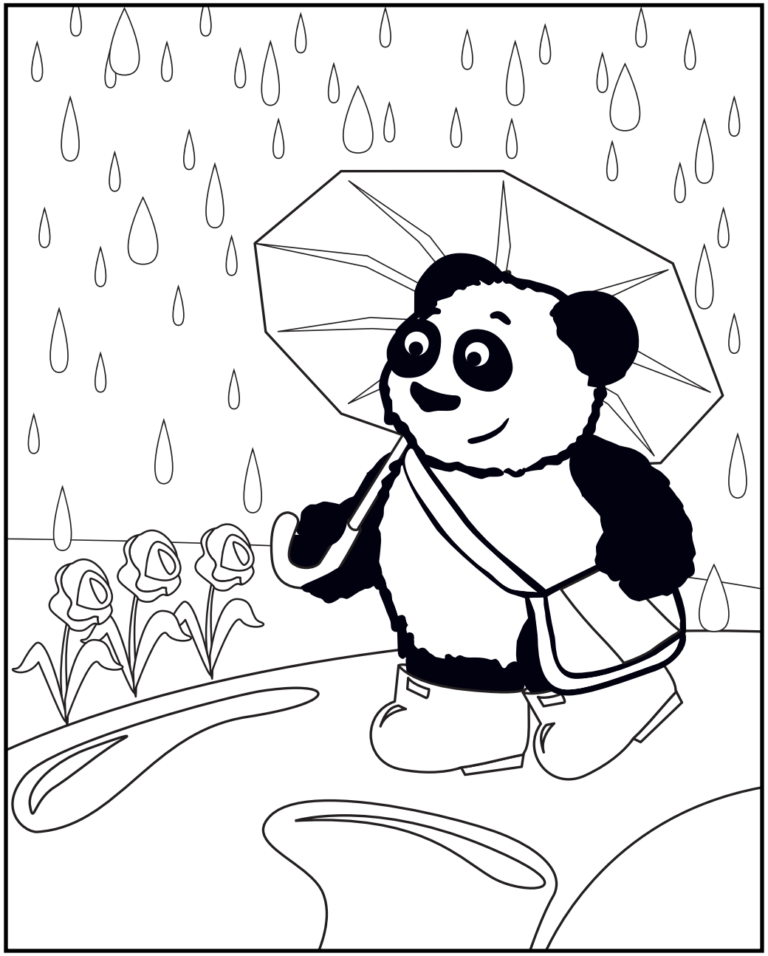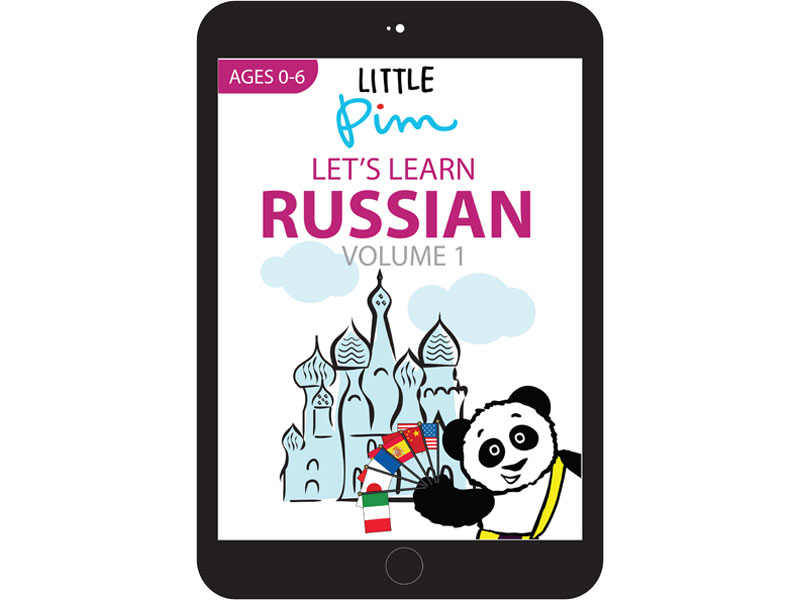
LITTLE PIM BLOG
Learn a Language to the Beat of Your Favorite Song
You have all likely heard the song “Despacito” (lyric video below) recently, whether you know it or not, as it has been played on every radio station. Justin Bieber’s feature has helped the Spanish song rise to the top of the charts. Fascinatingly, a 2015 census confirmed that in certain Miami communities up to 90% of the population speaks Spanish, and 2016 data notes that nearly 70% of the county is Hispanic. Moreover, in 2015, half of New Yorkers were recorded to speak a language besides English at home. The success of the song coupled with these statistics demonstrate how culturally integrated our society has become. Whether or not you currently live in an urban metropolis, like Miami or New York, where cross-cultural interaction is extremely frequent, teaching your child foreign languages at a young age is not only fun but prepares them to thrive in an increasingly globalized world.
Knowing more than one language, which can start with learning a simple song, opens doors for your children in the classroom and in the workplace.
Let’s talk about some more boring statistics so that I can show you the value of turning on a song in a foreign language. Only 1.5% of the students enrolled in higher education in the 2014-2015 school year studied abroad. Each of these students, by immersing themselves in a different culture, often speaking a different language, propelled personal and future professional growth. The ability to recognize and appreciate cultural differences via an immersive experience motivates a certain respect that is often lacking among individuals in such a polarized political and social climate in the US. Additionally, the fluency in a language and understanding of cultural norms and traditions of a country brought about by a study-abroad also make an individual a greater asset to potential employers, as 95% of consumers across the globe live outside of the US. 95%! Learning the language of that culture prior to visiting maximizes the power of this experience to spur development. Afford your child the same personal and professional benefits as this mere 1.5% of students by teaching them a foreign language and exposing them to a different culture.
After being exposed to data that connotes language learning’s capacity to permit personal and professional growth, a parent is saddled with the question: how do I get my child excited about language learning?
You have likely subconsciously heard the answer to this question in listening to songs like “Despacito.” Kids respond very positively to music, and there are countless simple songs that can provide a perfect introduction to a foreign language. Little Pim, as a company dedicated to making language-learning fun and accessible, has compiled some of these songs into Spanish and French CD’s for kids. As the heat waves roll in and you and your family begin planning summer road trips or weekend getaways, these CD’s are the perfect in-car activity. If you are a bilingual family, you may be able to immediately pick up the lyrics and sing along with the CD as your child learns. If you are learning alongside your child, it can be a beautiful bonding experience.
Language learning doesn’t have to be extremely serious or scary. It can start with a single CD and turn into a worthwhile investment in your child’s future.
The Advantage of Multilingualism
The traditional view of imposing language learning on children is that the two languages would interfere with each other and slow literacy learning. There is some evidence that learning two languages in early education does impose additional stressors on the brain.
New evidence suggests that this stress actually improves mental ability.
The demand forces the brain to solve some fundamental learning problems which monolingual children never have to face.
The key difference between monolingual and bilingual children goes beyond the ability to control the suppression of one language and select the other language at will.
It seems to be about improvements in ability to monitor surroundings and sensitivity to the environment.
New studies indicate that the multilingual exposure is manifest in improved social skills in children.
These particular cognitive abilities, are improved through multilingual education:
The ability to monitor the environment is especially important for social interaction.
Children who have learned how to select among learned languages are better at considering the point of view of others.
This is a critical developmental faculty that the pioneering developmental psychologist Jean Piaget called "decentering."
Children in multilingual environments have ample practice considering the point of view of others.
They are also more aware that there is more than one point of view.
Children who learn more than one language are often raised in environments surrounded by multiple languages and cultures.
They learn early how to see the world through widely varied eyes, a range of different perspectives.
They learn to account for other perspectives in their communication and their attitude development.
Not only do they become more decentered (in Piaget's terms) but they become less "egocentric" as well.
At Little Pim, we believe that all children deserve to learn a second language. We use a natural immersive method of teaching. Please contact us to learn more.
Rainy Day Coloring Activity
Add some color on a gloomy day by printing out this Rainy Day Little Pim coloring sheet. July 29th is Rain Day according to the DaysoftheYear.com calendar and throughout history, people of many cultures across the world have celebrated rain and it's "life-giving power." Teach your little ones about the power of rain and how it is necessary for survival. If it's raining where you are, head outside with the kids to walk in the rain and to jump in some puddles! When you get back inside, serve some fresh fruits and vegetables that need rain to grow. Review your color and food vocabulary as you point out each fruit and vegetable in the second language. After a healthy snack, get their creative juices flowing by printing out Little Pim's Rainy Day Coloring Sheet!
Share your rainy day fun with us by using #LittlePim on Instagram or Twitter!
Click here to print out the rainy day coloring sheet.
A Simple Guide: Which language is best for my child to learn?
Choice is an incredible gift. For parents, however, it is also paralyzing. When our choice regards our children's education, we catalog every possible option, outcome, success, and worst-case result, don't we? Little Pim applauds such parents who want desperately to choose what's best for their child. We recognize how this deliberation is firmly rooted in love, so we not only gift you with choices, we also equip you with helpful tools to choose. Seeing as multicultural awareness and the growing necessity for well-rounded children has never been as strong, we're thankful for your interest in at least one of the 12 language programs we offer. You've likely had the thought: Which language is best for my child to learn? The following guide should help you confidently navigate your choice, as well as this important note.
Children aged 0-6 have brains best for learning up to three languages at once! If you can't choose one, why not consider two or more? Your child will soon thank you for this choice between multiple languages learned. What a unique potential to influence our world!
Little Pim's Twelve Language Programs:
Spanish
As the 2nd most common language in the United states, Spanish is one of the simplest languages for English-speaking children to learn and one of the most useful languages in the world for travel. There are over 414 million Spanish-speaking people in the world. Spanish lends well to learning other Latin-based languages in the future such as French and Italian. These languages all have Indo-European roots and share some characteristics that are present in Spanish but not English. Knowing Spanish can open up many job opportunities for your little ones, especially in the United States in healthcare or education industry.
Check out LeapFrog's blog to learn about 10 benefits of teaching your child Spanish.
French
Did you know that French is the most widely studied language in the world? As the official language of over 29 countries, French is highly utilized in the world of higher learning, literature, culinary arts, and fashion. It is also recognized as an official language of the United Nations. There are also many words in the English language that have French origins, such as "rendezvous" or "cinema."
French is also one of the foreign languages our founder, Julia Pimsleur, chose for her two boys, Emmett and Adrian. Adrian speaks fluent French and Emmett speaks some Spanish, French and Hebrew.
Mandarin Chinese
It's the most widely spoken language in the world! An increasing demand for Mandarin-speaking employees is just one reason to start your child early! Spoken by over 1 billion people worldwide, Mandarin is an official language of the United Nations. Mandarin Chinese is tonal, which means that pitch is used to distinguish its lexical or grammatical meanings. The earlier a child begins to learn this language, the easier it is for them to pick up on the differences in tone and begin employing them correctly.
The latest trends we’ve seen at Little Pim are new parents choosing to teach their child Mandarin alongside romance languages like Spanish and/or French.
Russian
As the official language of the former Soviet Union, Russian is still spoken in 15 European and Asian countries. Russian is spoken by almost 280 million people worldwide, and is an official language of the United Nations. It is the fifth most frequently spoken language in the world. International political developments and growing business opportunities with multinational companies have led to increased demand and opportunities for Russian speakers.
The Russian alphabet is easy to learn and only has 33 letters. It is a Cyrillic script, which is a writing system used for alphabets across Eastern Europe, as well as North and Central Asia. The Russian alphabet is wonderfully phonetic, making it even easier than English as the letters have a consistent pronunciation.
Italian
Italian remains one of the top 5 languages studied in US colleges. Over 7,500 businesses correspond with Italy hosting over 1,000 US firms. If you're child is a musician or music lover, he or she will love learning Italian. Did you know that Italian is the language with the highest number of words for naming food, restaurants, dishes, and produce? For more reasons to learn Italian, check out The Italian Academy's article on the "Top 10 Reasons to Learn Italian."
German
As the 10th most spoken language in the world, this language has English roots. Phew! There are thousands of words that are closely related known as "cognates." Why not try this language long-associated with academia and science. Knowing German also increases business opportunities as Germany is the #1 export nation in the world.
Japanese
Almost every nation in the world includes some aspect of Japanese culture and commerce. Tourists flock to Japan annually, supping from its offerings and influence. Japanese is the 9th most spoken language in the world, with 128 million speakers. Japan has the 2nd largest economy in the world, which leads to increased demand for Japanese speaking experts. Learning Japanese may also inspire your child to learn the other Asian languages we offer such as Korean or Mandarin Chinese.
Arabic
As an official language of the United Nations, Arabic is the most widely spoken Semitic language. Arabic is spoken by roughly 300 million people. Many English words have Arabic roots; words like 'candy,' and 'spinach.' Yum! According to AmericanCounsels.org, "In the last 15 years, U.S. government agencies have expressed a much greater need for Arabic speakers to address the complex political, military, and economic questions surrounding U.S. engagement in the Middle East and North Africa."
Hebrew
Over 10 million people speak Hebrew daily. Worldwide, millions more study Hebrew for both religious and cultural reasons. If you or your little ones plan to travel to Israel, learning Hebrew will definitely come in handy as it's the national language. Israel is also one of one fastest-growing high-tech economies in the world. Learning Hebrew can be easy and fun, especially with Little Pim by your side.
Portuguese
Welcome to the language of the Southern Hemisphere! Because this language is rarely studied, speaking it is an incredibly marketable skill. Did you know that Portuguese is the 6th most spoken language in the world, with 215 million native speakers?
By learning Portuguese, your kids will have a much easier time picking up any of the other romance languages like Spanish, French, or Italian since they all have Latin roots.
Korean
Korean is currently growing in popularity due to South Korea's powerful economy, geopolitical importance, art and culture. There are over 80 million Korean speakers in the world and the Korean culture is like no other. Many people choose to study Korean because they fell in love with the culture. Korea is famous for K-pop music and Korean dramas. For more reasons, check out our blog post on why your child should learn Korean.
English
Little Pim's most popular language program outside the United States in our English/ESL program. After Chinese and Spanish, English is the world's most spoken language with over 335 million speakers worldwide.
Learning a second language can be fun, easy, and effective with Little Pim. Language learning should always be a positive experience and cannot be rushed. Remember to praise your little ones for speaking in the second language. Teaching your child a foreign language can be a great way to give your child a head start and prepare him or her for the global economy.
For more extensive explanations, you can read further here. And of course, please do not hesitate to comment below contact us with any questions.
Celebrate "Kodomo no Hi" - Children's Day in Japan
When children are learning new languages, introducing them to multicultural activities that relate to the new language is a fantastic way for them to get involved. If you are teaching your child Japanese, they'll love learning about "Kodomo no Hi" (Koh-doh-moh noh Hee) or "Children's Day" in Japan, which falls on "the fifth day of the fifth month," or May 5th. Kodomo no Hi was initially known as "Boys Day" in contrast to a "Girls Day" that is held in March. In 1948, though, the government moved to change it to "Children's Day" to celebrate, respect and honor all children. Children in Japan enjoy the day off from school on Children's Day. Below are some traditional ways families celebrate this special holiday and some fun activities to engage your little ones!
Japanese Folklore
Japanese children often listen to the story of "Kintarō" or "Golden Boy" on Children's Day. This famous legend tells the story of a young boy who was very strong and rode a bear rather than a horse. It's custom for families with boys to decorate their home with a Kintarō doll in hopes that their boys will grow into brave, strong men. You can find a version of this story in English in "Kintaro's Adventures and Other Japanese Children's Favorite Stories" by Florence Sakade on Amazon.
Children's Day Crafts
Japanese families often fly a "koinobori" flag outside their home to bring in good luck and fortune. This flag consists of a large black koi or carp fish to represent the father, a smaller red one to represent the mother, and smaller fish of different colors to represent each child. The koi fish symbolize strength and determination in Japanese culture as these fish are known for swimming upstream through strong currents. To celebrate Children's Day in your home, you could make a similar koinobori flag to represent your family following these directions from the Asia Kids Society.
Get out the crayons - your kids will love this coloring page from Activity Village that showcases two children dressed in traditional Japanese dress. While they choose their colors, teach them how to say each color in Japanese to make language learning fun!
- Red - aka
- Orange - daidaiiro
- Yellow - kiiro
- Green - midori
- Blue - ao
- Purple - murasaki
- Pink - momoiro
- Black - kuro
- Brown - chairo
- Gray - haiiro
- White - shiro
Children's Day Treats
The traditional food for Children's Day is mochi, a pounded-down rice cake. If you have a Japanese or Asian grocery nearby, you might be able to buy pre-made mochi made with a sweet bean filling. Alternatively, purchase mochi powder to make your own. Kids will love rolling their own mochi balls.
For more ideas on how to celebrate the Japanese holiday, Children's Day in your home, visit The Japan Society for photos and other fun activities for kids. If you're interested in teaching your child Japanese, Little Pim can help. Learning a second language is a real brain booster for young kids. The Japanese Complete Set introduces 180 fundamental words and phrases your kids will want to repeat again and again. Watch a free trial of Japanese for kids.
This Month, Celebrate the Bilingual Child!
October is "Celebrate the Bilingual Child" Month! At Little Pim we love to celebrate bilingualism, so we're teaching you how to say "child" in 20 different languages:
Arabic: طِــفــل (Tifl)
Chinese (Mandarin): 孩子 (Háizi)
Croatian: Dijete
Danish: barn
Dutch: kind
French: enfant
German: Kind
Greek: παιδί (Paidí)
Hebrew: ילד (yeled)
Hindi: बच्चे (Baccē)
Hungarian: gyermek
Italian: bambino
Japanese: 子供 (Kodomo)
Korean: 아이 (ai)
Polish: dziecko
Portuguese: criança
Russian: ребенок (rebenok)
Spanish: niño
Swahili: mtoto
Vietnamese: con
All translations from inDifferent Languages.
Helping Your Kids Transition from Summer to School
Summer flew by faster than most of us expected and getting back to our school day routines can actually be exciting for parents. In order to make a smooth transition from vacation mode to strict schedules, we've put together a list of tips to make this as easy as possible. Good luck and happy parenting!
1. Sleep Schedules

Photo credit: Ozyman / Foter / CC BY-NC-SA
You may not hear it often but it's time to get back to your old habits! It is important to start getting the kids to bed at a reasonable hour at least two weeks before school begins. This way they will be well adjusted and rested when the first day of school rolls around. Setting morning alarms can also be helpful for those of us that like to sleep in.
2. Adjust Your Eating Habits
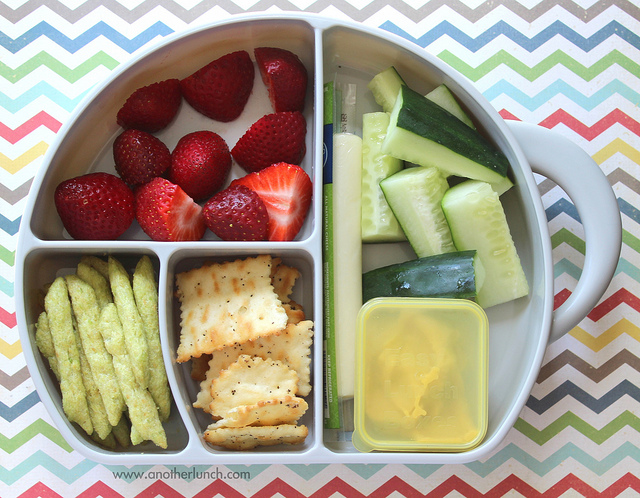
Photo credit: theglobalpanorama / Foter / CC BY-SA
Time to get healthy again! We all know that summertime causes our shelves and refrigerators to become full of unhealthy snacks like ice cream and chips. It's time to get your kids back on track. Plan quick and healthy meals that meet their school lunch schedule.
3. Establish a Learning Environment
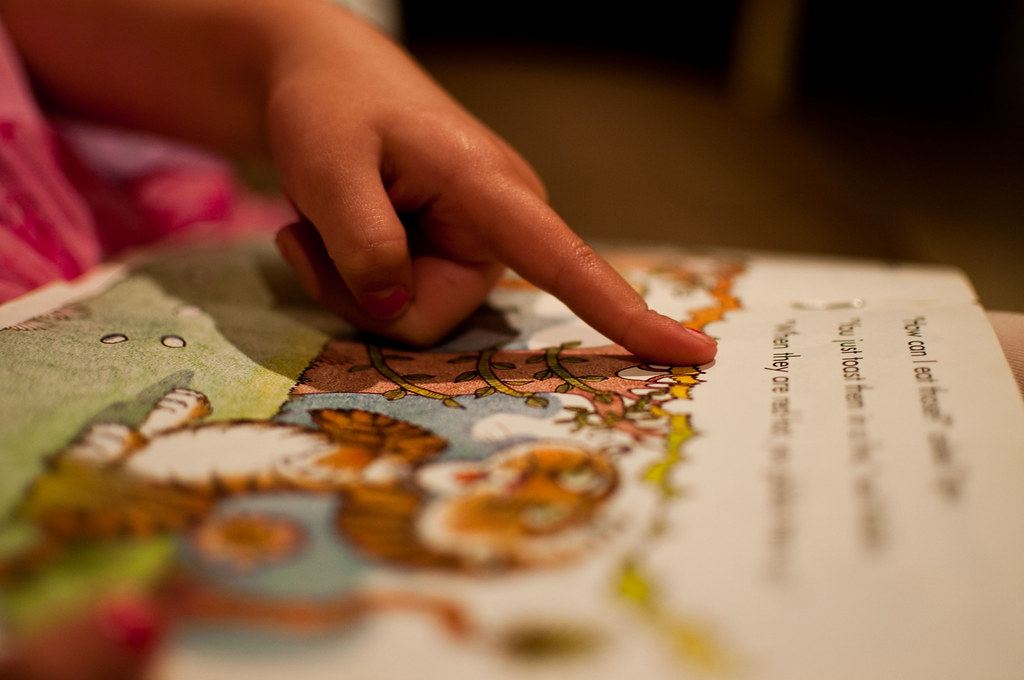
Photo credit: Holtsman / Foter / CC BY-NC
In case you got carried away like the rest of us, now is your chance to get crafty with your kids at home! Set up a well-lit, quiet study area and make sure your kids become comfortable with the space. Whether it's by using your Little Pim flashcards or simply drawing with a pen and paper, make sure you set aside some time for your children to adapt to a learning environment.
4. Rekindle Friendships

Photo credit: swambo / Foter / CC BY-SA
Children can sometimes be worried about finding friends at school. Schedule play dates with parents and friends that you may have lost touch with over the summer. This way your kids can feel more confident and comfortable in the classroom.
5. Motivate your kids
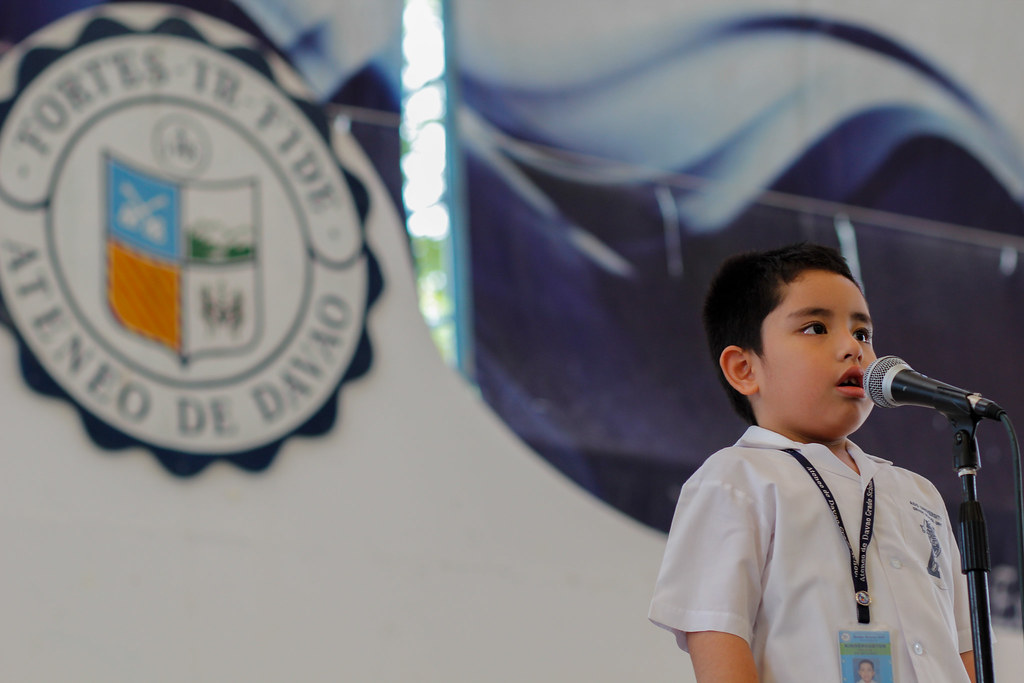
Photo credit: Jeff Pioquinto, SJ / Foter / CC BY
School is fun and it's important that your kids know! Talking about school will make your kids more confident and encouraged to do their best. Ask questions like: "What are your favorite subjects at school?" "What are your goals this year?" Setting goals is the first step to reaching them.
7 Hottest French-Speaking Celebrities
In honor of Bastille Day, we've rounded up the seven hottest Francophone men. Enjoy listening to the music for your ears while watching candy for your eyes.1. Johnny Depp
[youtube id="LIPG7JxNP90" align="center" mode="normal" autoplay="no"]
Low-tech and high-tech toys at Toy Fair 2015
Toy Fair 2015 in New York showed off new toys of all kinds, from the simple and familiar to the edgy and technological. There were toys for kids of all ages and for kids at heart. Toy Fair brings out the best in toys, from books to dolls to learning tools to plush toys. Check out the highlights of this year's convention.
There were new twists on familiar toys like basic blocks and stacking toys. Toymakers added new functions to products like rattles and crib toys but kept them simple enough for the youngest customers to enjoy.
Some toys bridged the gap between technology and old school fun, like Toymail, a cute physical mailbox that lets family members leave kids WiFi voice messages through free phone apps. For parents who travel, children can hear friendly voices and encouraging messages - without having to stay in front of a laptop. They can play and respond to the messages when and where they want.
Take a hint from Little Pim the Panda and leave your kids a voicemail message using the words they’re learning in a new language. Hearing your voice saying some of their new vocabulary is a great way to send a caring greeting and help them learn new words in Spanish, Chinese, or French!
Augmented reality made books and other toys come alive through interactive, easy-to-use apps. When you point your phone at the right spots in a book, for example, your phone shows hidden features and games to play.
A redesigned View-Master and a talking, “smart” Barbie that connects to the cloud were also attention-grabbers.
The Little Pim booth welcomed everyone interested in children’s language learning.
10 Great Kids Books With Global Appeal
 Sail away with your kids to magical lands across the sea – just by picking up a book. These 10 great kids books will give your family a glimpse of cultures and a taste of languages around the world. You can read all of them in English, but if you’re feeling up to it, several (such as the French classic The Little Prince) can easily be found in their original language. Whatever you choose, reading with your kids is a great way to bond and let their imaginations grow. Plus, it’s one step closer to getting ready for school, which will be here before you know it.
Sail away with your kids to magical lands across the sea – just by picking up a book. These 10 great kids books will give your family a glimpse of cultures and a taste of languages around the world. You can read all of them in English, but if you’re feeling up to it, several (such as the French classic The Little Prince) can easily be found in their original language. Whatever you choose, reading with your kids is a great way to bond and let their imaginations grow. Plus, it’s one step closer to getting ready for school, which will be here before you know it.
Europe
1. The Adventures of TinTin (Belgium) – A dog and his intrepid young reporter owner solve mysteries around the world – the comic strip imagery is especially popular with young children; and the comics are also available in French.
2. The Little Prince – A lovely French classic that tells the story of an aviator who meets a prince from a distant asteroid while stranded in the desert. This is a good one to try in French if you can.
3. The Invention of Hugo Cabret – Take a trip through Paris with the vivid pencil images in this imaginative story of Hugo, a boy who lives in a train station in Paris, and the friend who helps uncover his mechanical secret.
4. Strega Nona—Although written in English, this is the tale of an Italian “Grandma Witch” who lives in Calabria and makes enough pasta to bury an entire town. There are more than a dozen Strega Nona stories to keep the pasta-fueled fun going.
Scandinavia
 5. Pippi Longstocking –Sweden’s contribution to global kids’ imaginations is this firecracker of a main character, a red-headed 9-yr-old with a with a suitcase full of gold, a pet monkey, and horse on her front porch. A great read out loud book that will make you and your kids laugh out loud.
5. Pippi Longstocking –Sweden’s contribution to global kids’ imaginations is this firecracker of a main character, a red-headed 9-yr-old with a with a suitcase full of gold, a pet monkey, and horse on her front porch. A great read out loud book that will make you and your kids laugh out loud.
6. The Moomins – A Swedish/Finnish illustrated collection of books about a family of animal-like creatures. The pictures are sure to captivate kids, and if they really love it, there’s even a Moomin theme park in Finland!
Asia
 7. Lon Po Po – A Red Riding Hood Story from China – In this Chinese reworking of the classic Grimm fairytale, three sisters in rural China outwit the (heads up, relatively scary looking) Lon Po Po (Granny Wolf). Great for kids who like their stories to keep them on the edge of their seat.
7. Lon Po Po – A Red Riding Hood Story from China – In this Chinese reworking of the classic Grimm fairytale, three sisters in rural China outwit the (heads up, relatively scary looking) Lon Po Po (Granny Wolf). Great for kids who like their stories to keep them on the edge of their seat.
8. The REAL Story of Stone Soup – Another children’s classic story with a Chinese twist. This time three clever brothers turn stones into egg drop soup – keep an eye out for Chinese vocabulary sprinkled throughout the story.
Africa
 9. Anansi The Spider – From West Africa comes this Ashanti fable of a small spider who must make a big decision.
9. Anansi The Spider – From West Africa comes this Ashanti fable of a small spider who must make a big decision.
10. We All Went on Safari -- A counting journey through a safari in Tanzania. There’s a surprising amount of rhythmic Swahili vocabulary tucked into the illustrations of animals.




